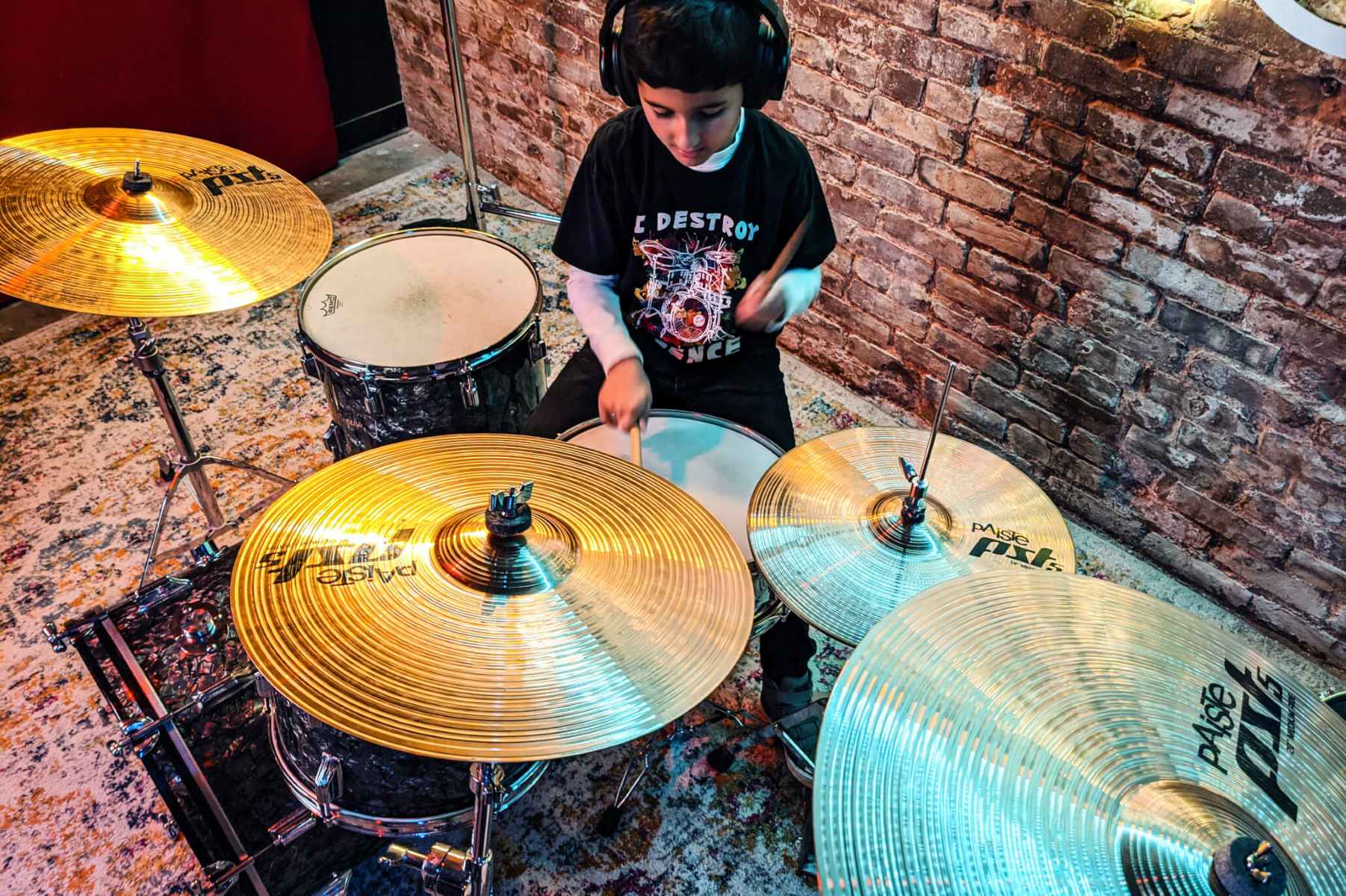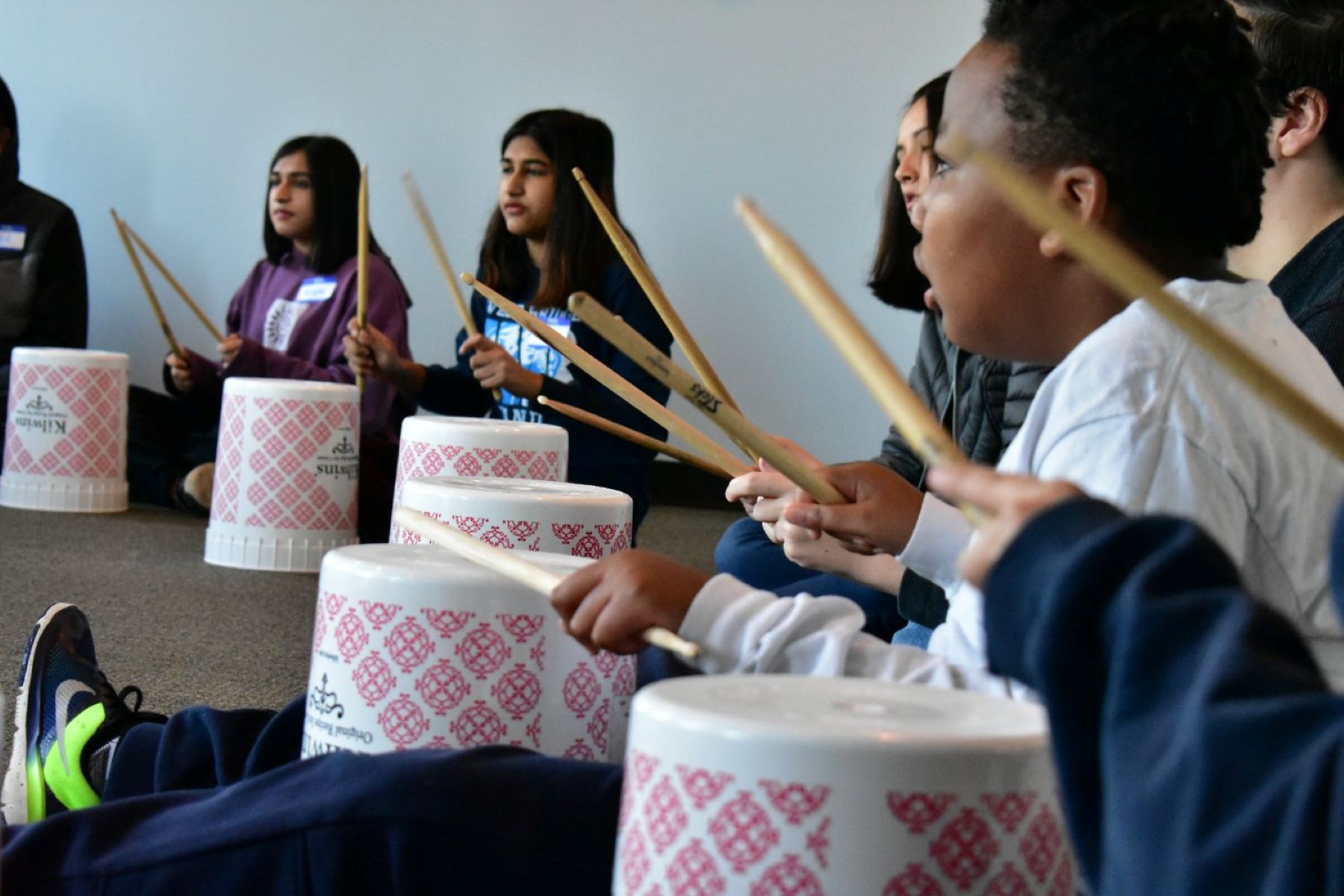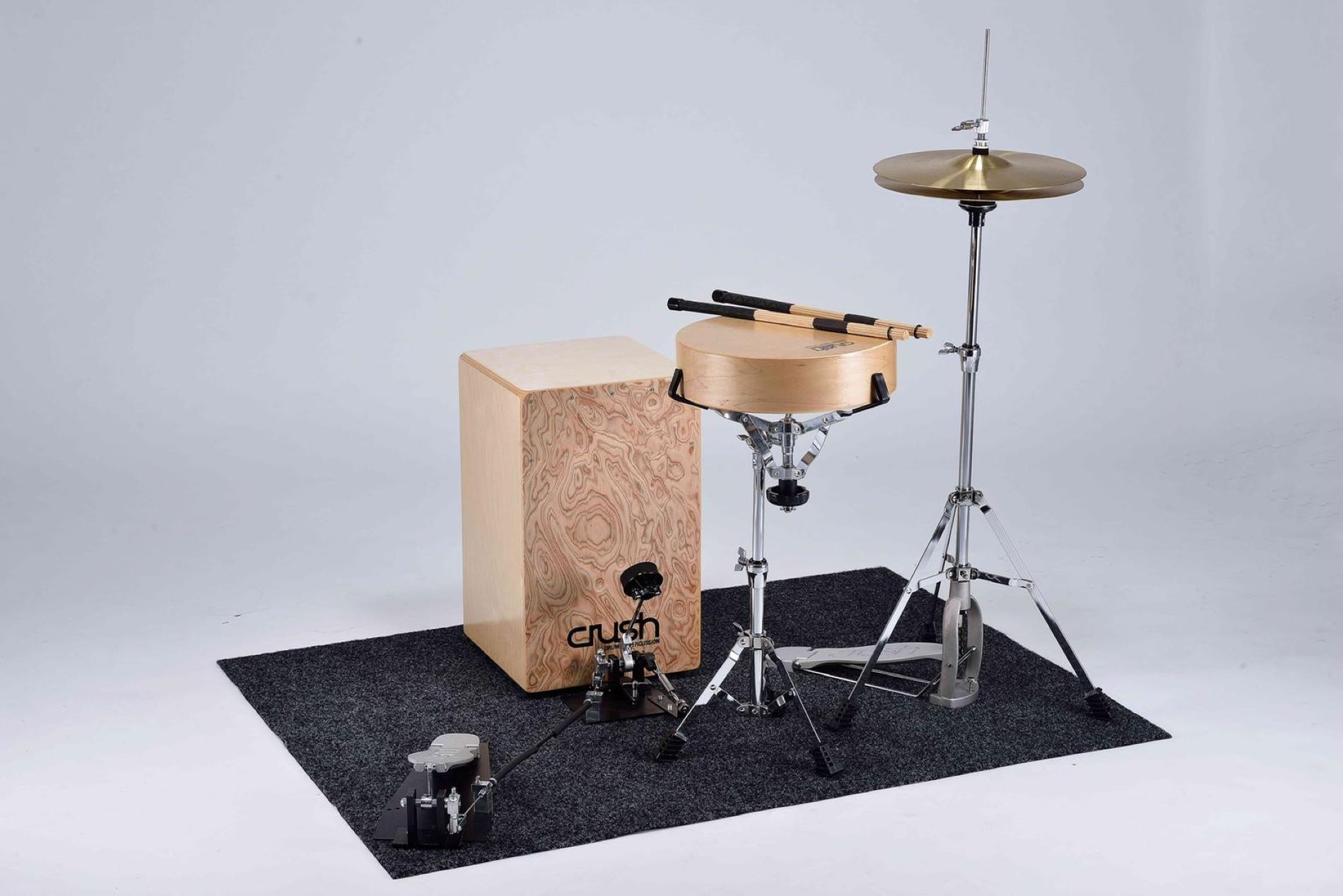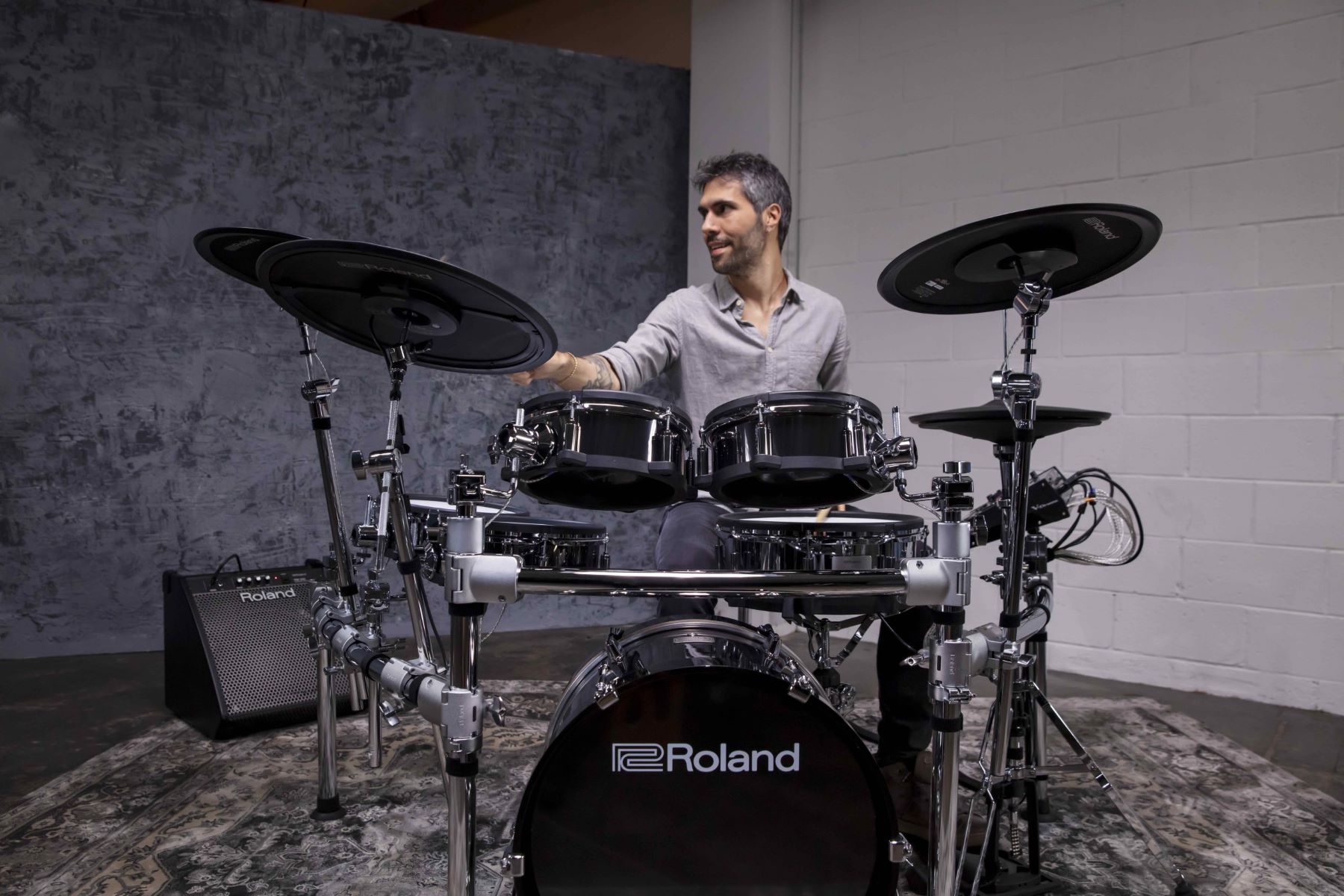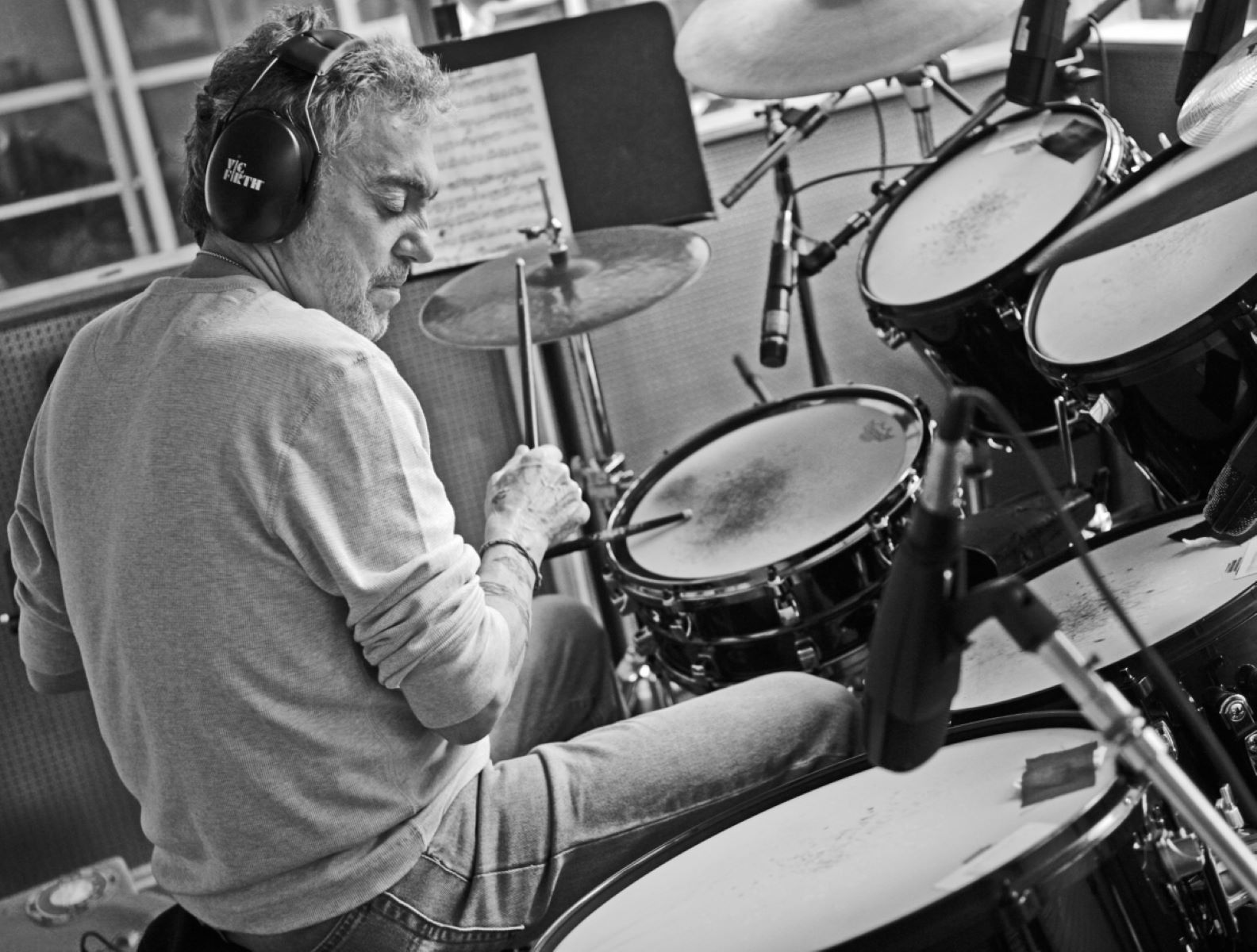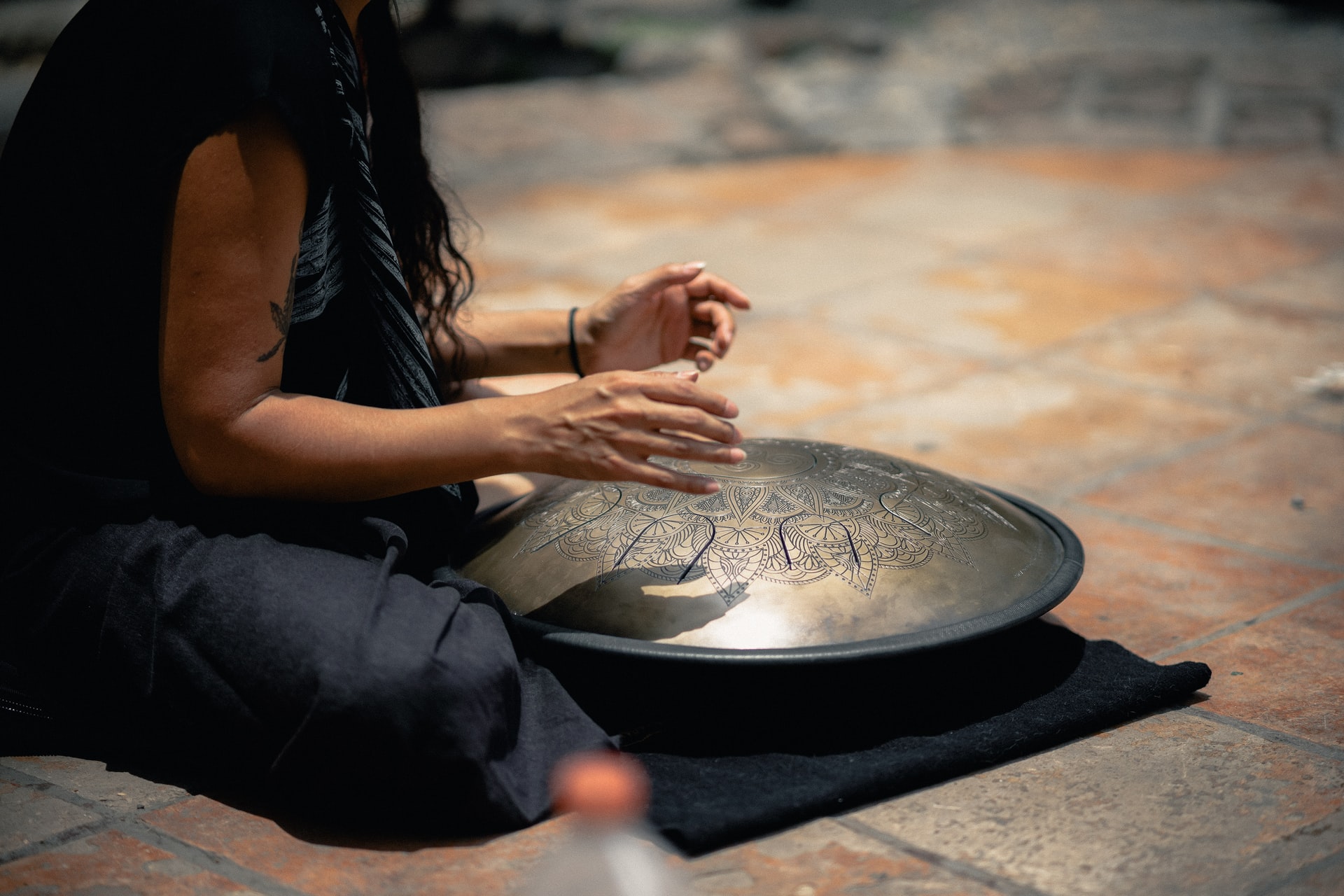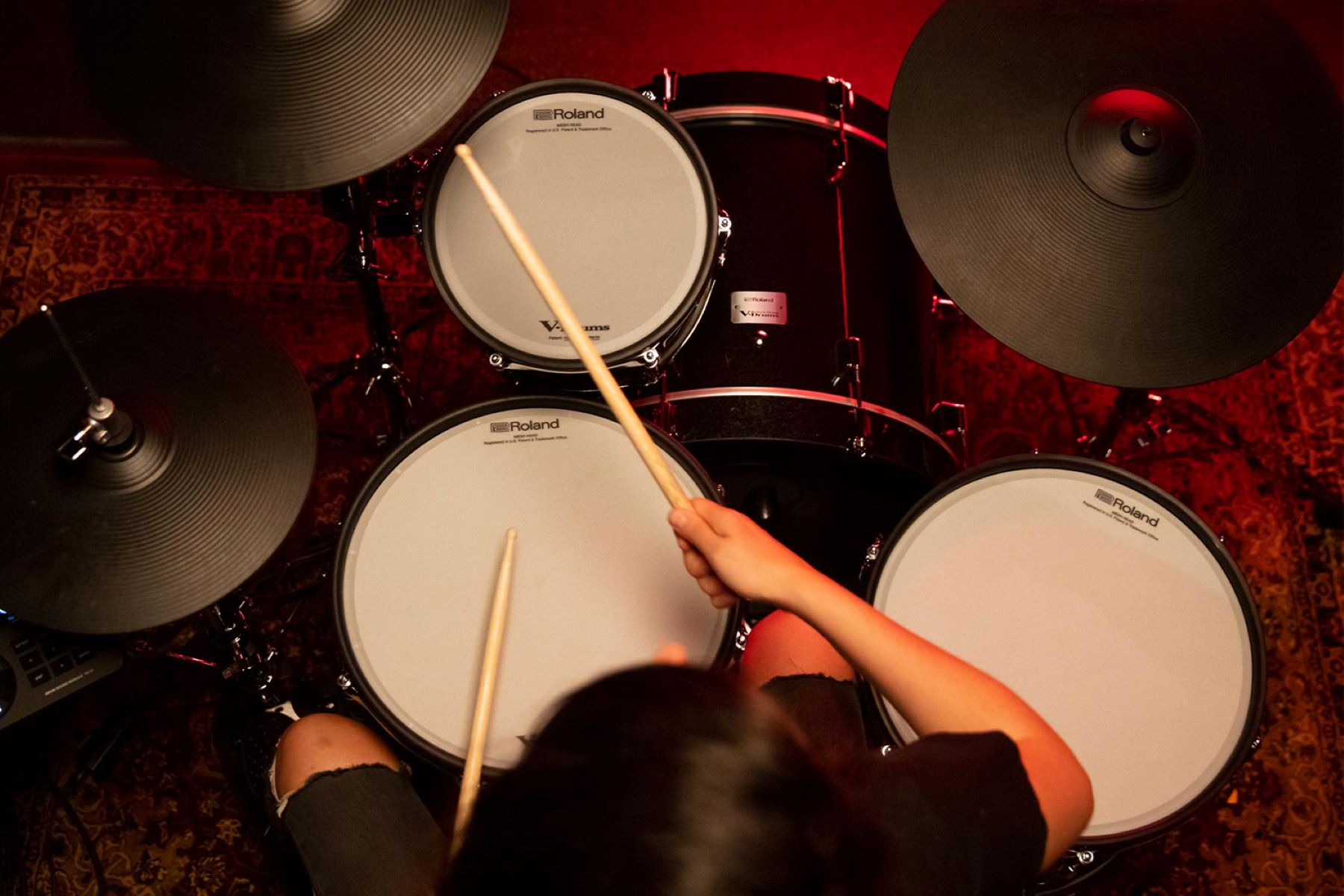Home>Instruments>Drums>How To Play Conga Drums
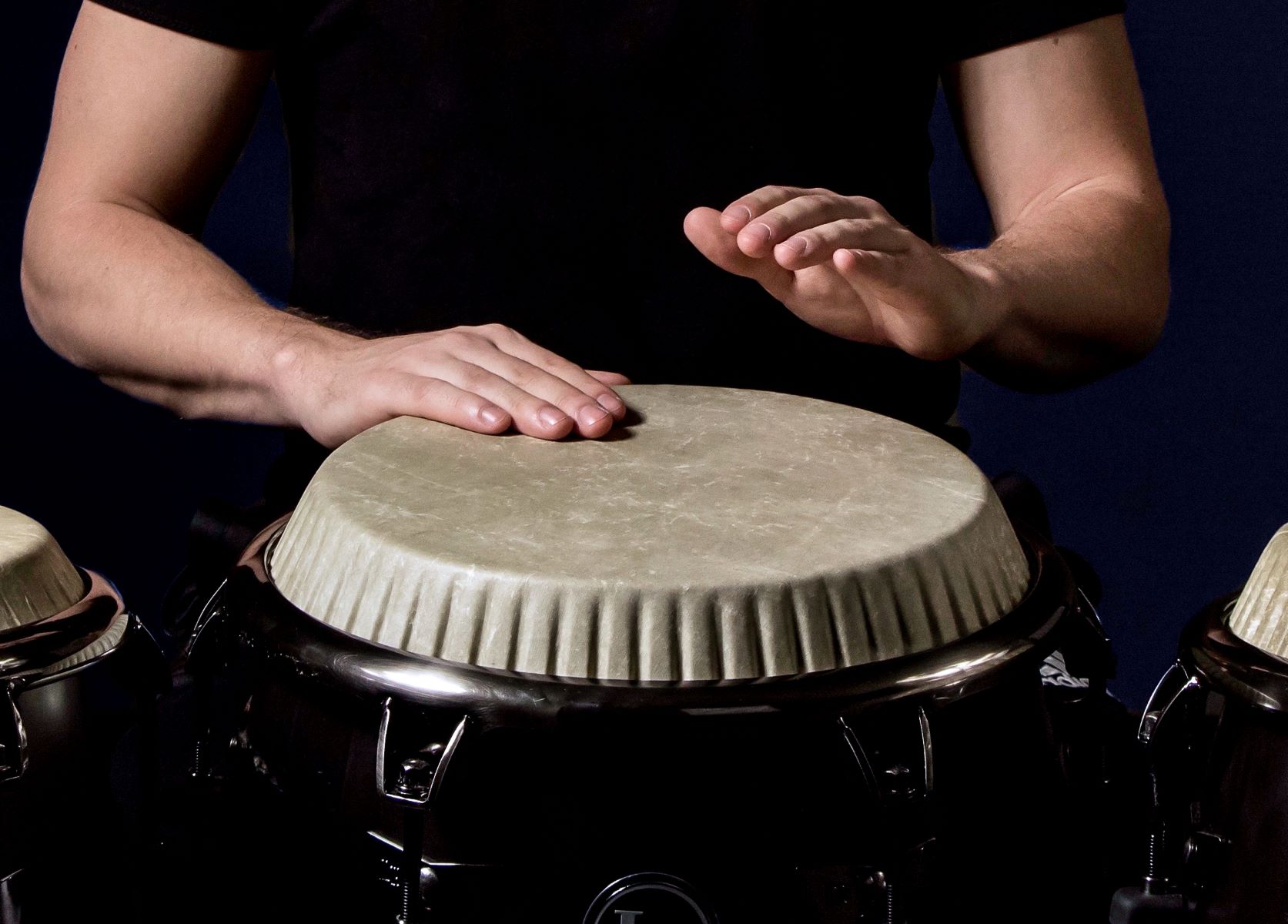

Drums
How To Play Conga Drums
Published: February 8, 2024
Learn the basics of playing conga drums with our step-by-step guide. Discover essential techniques and tips for mastering the art of drumming.
(Many of the links in this article redirect to a specific reviewed product. Your purchase of these products through affiliate links helps to generate commission for AudioLover.com, at no extra cost. Learn more)
Table of Contents
Introduction
Introduction
The conga drums, with their captivating rhythms and rich history, hold a special place in the world of percussion instruments. Originating in Africa and brought to the Americas through the transatlantic slave trade, these drums have evolved to become a fundamental element of various music genres, including Afro-Cuban, jazz, and Latin music. Playing the conga drums is not only a musical endeavor but also a cultural and rhythmic journey that allows individuals to express themselves through the infectious beats and melodies they produce.
Learning to play the conga drums is a rewarding and enriching experience that offers a unique blend of physical coordination, creativity, and cultural immersion. Whether you are a seasoned percussionist or a novice exploring the world of rhythm, the conga drums provide a vibrant and dynamic platform for artistic expression.
In this comprehensive guide, we will delve into the art of playing conga drums, exploring the fundamental techniques, advanced methods, and the intricate nuances of rhythm and timing. Additionally, we will discuss the collaborative aspect of conga drumming, highlighting the synergy that arises when playing with other musicians. By the end of this journey, you will have gained valuable insights and practical knowledge to embark on your conga drumming odyssey with confidence and enthusiasm. So, let's embark on this rhythmic adventure and discover the captivating world of conga drumming.
Understanding the Conga Drums
Understanding the Conga Drums
Before delving into the techniques of playing the conga drums, it is essential to develop a comprehensive understanding of these iconic percussion instruments. The conga drums, often referred to simply as “congas,” are tall, narrow, single-headed drums that originated in Cuba. Typically played in sets of two or more, congas come in different sizes, with the smaller drum, known as the “quinto,” producing higher pitches, and the larger drum, known as the “tumba,” producing deeper tones.
The construction of conga drums involves a wooden or fiberglass shell, a natural skin or synthetic drumhead, and tension rods that allow for tuning. The drums are traditionally played using the hands and fingers, producing a wide range of tones and dynamics. The resonant, earthy sound of the congas is a defining characteristic of various music styles, contributing to the infectious rhythms that permeate Latin, jazz, and world music compositions.
Furthermore, understanding the cultural significance of conga drums is integral to appreciating their role in musical expression. Rooted in African traditions, conga drumming embodies a spiritual and communal connection, serving as a form of communication, celebration, and storytelling. The rhythmic patterns and techniques associated with conga playing are deeply intertwined with the historical narratives and cultural practices of diverse communities, making the drums a symbol of heritage and unity.
Aspiring conga drummers embarking on their musical journey must grasp the profound legacy and cultural resonance of these instruments. By recognizing the historical and musical contexts in which conga drums thrive, players can develop a profound appreciation for the art form and approach their practice with reverence and authenticity.
Basic Techniques
Basic Techniques
Mastering the fundamental techniques of conga drumming is crucial for developing a strong rhythmic foundation and expressive capabilities. Whether you are a beginner or an experienced percussionist, honing these basic techniques is essential for producing clear, resonant tones and creating dynamic rhythmic patterns.
1. Hand Positioning: Proper hand positioning is key to producing a balanced and consistent sound on the conga drums. The fingertips and palm of the hand are used to strike the drumhead, with the fingers and wrist providing controlled movement and precision. Maintaining a relaxed yet firm grip on the drum surface allows for fluid and efficient playing.
2. Open Tone (Tone Seco): The open tone, also known as “tone seco,” is a foundational stroke that produces a clear, resonant sound. To execute this technique, the player strikes the drumhead with the dominant hand’s fingertips, allowing the fingers to bounce off the surface, resulting in a vibrant and sustained tone. The non-dominant hand is used to mute the drum immediately after the strike, controlling the resonance and duration of the sound.
3. Muffled Tone (Muffled Stroke): The muffled tone, or muffled stroke, involves using the dominant hand to strike the drumhead while the non-dominant hand rests on the drum to immediately mute the sound. This technique produces a shorter, drier tone compared to the open tone and is integral for creating rhythmic accents and variations.
4. Slap: The slap is a percussive and sharp stroke that adds a distinct percussive accent to conga rhythms. It is executed by striking the drumhead with the fingers and palm of the dominant hand, creating a sharp and explosive sound. The non-dominant hand is used to control the resonance and prevent excessive ringing.
Developing proficiency in these basic techniques lays the groundwork for exploring more intricate rhythms and playing styles. By focusing on precision, control, and dynamics, aspiring conga drummers can build a strong technical repertoire and unlock the expressive potential of these mesmerizing percussion instruments.
Advanced Techniques
Advanced Techniques
As conga drummers progress in their musical journey, delving into advanced techniques opens up a world of rhythmic complexity and expressive possibilities. These techniques, characterized by their intricacy and nuance, allow players to elevate their performances and infuse their rhythms with depth and creativity.
1. Finger Rolls: Finger rolls are a sophisticated technique that involves rapidly rolling the fingertips across the drumhead to produce a sustained, shimmering sound. This technique requires dexterity and control, and when executed skillfully, it adds a layer of texture and fluidity to conga rhythms, creating entrancing melodic patterns.
2. Heel-Toe Technique: The heel-toe technique expands the rhythmic vocabulary by incorporating the use of the heel and toe of the palm to produce distinct tones. By leveraging the different parts of the hand, conga drummers can create intricate rhythmic variations and articulate complex rhythmic phrases with precision and clarity.
3. Cross-Body Strokes: Cross-body strokes involve crossing the dominant hand over the non-dominant hand to strike the opposite drum, allowing for seamless transitions between drums and expanding the range of rhythmic possibilities. This technique enhances the fluidity of conga playing and facilitates the integration of diverse patterns into cohesive and dynamic performances.
4. Ostinato Patterns: Ostinato patterns are repetitive rhythmic motifs that form the foundation of conga drumming compositions. Mastering the art of crafting and maintaining ostinato patterns requires a deep understanding of rhythmic structures and the ability to sustain consistent patterns while incorporating variations and improvisations.
By embracing these advanced techniques, conga drummers can push the boundaries of their rhythmic expression, infusing their performances with sophistication and virtuosity. These techniques not only expand the technical capabilities of the player but also contribute to the evolution of rhythmic traditions and the perpetuation of the conga drum’s cultural significance.
Developing Rhythm and Timing
Developing Rhythm and Timing
Mastering rhythm and timing is at the core of becoming a proficient conga drummer. It involves honing a deep sense of pulse, internalizing diverse rhythmic patterns, and cultivating the ability to synchronize with other musicians. Developing these essential skills is a continuous and enriching process that shapes the musicality and expressiveness of a conga drummer.
1. Internalizing Pulse: Internalizing the pulse of a rhythm is fundamental to developing a strong sense of timing and groove. By immersing oneself in diverse musical styles and rhythmic traditions, conga drummers can internalize different pulses and tempos, enhancing their ability to lock into the rhythmic core of a composition and drive the music forward with precision and vitality.
2. Syncopation: Exploring syncopated rhythms, characterized by offbeat accents and unexpected rhythmic placements, is crucial for expanding rhythmic vocabulary and adding depth to conga performances. By embracing syncopation, conga drummers introduce compelling rhythmic tension and release, infusing their playing with captivating rhythmic nuances.
3. Playing in Ensemble: Collaborating with other musicians provides invaluable opportunities to develop rhythmic cohesion and ensemble playing skills. Whether performing with a small ensemble or a full band, conga drummers learn to navigate complex rhythmic interactions, respond to musical cues, and contribute to the collective groove, fostering a unified and dynamic musical experience.
4. Dynamics and Expression: Mastery of rhythm and timing encompasses the nuanced control of dynamics and expression. Conveying a wide range of dynamics, from subtle accents to powerful crescendos, adds depth and emotional resonance to conga performances, allowing for compelling and evocative musical storytelling.
By dedicating time to developing rhythm and timing, conga drummers refine their musical sensitivity, expand their rhythmic vocabulary, and elevate their performances to captivating heights. Embracing the rhythmic journey with dedication and passion empowers conga drummers to become versatile and expressive musicians, capable of captivating audiences with their rhythmic prowess.
Playing with Other Musicians
Playing with Other Musicians
Collaborating with other musicians is a transformative and enriching experience that shapes the dynamics and depth of conga drumming performances. Whether participating in small ensembles, large bands, or diverse musical settings, conga drummers contribute to the rhythmic tapestry of the music, forge connections with fellow musicians, and collectively create captivating sonic landscapes.
1. Establishing Groove and Pocket: When playing with other musicians, conga drummers play a pivotal role in establishing and maintaining the groove and pocket of the music. By locking into the rhythmic foundation, conga drummers provide a steady and pulsating framework that anchors the ensemble, fostering cohesion and propelling the music forward with infectious energy.
2. Responsive Listening: Cultivating responsive listening skills is essential for conga drummers collaborating with other musicians. Attentive listening allows conga players to adapt to the evolving dynamics of the music, respond to musical cues, and engage in spontaneous musical dialogues, creating a dynamic and interactive musical environment.
3. Interplay and Musical Conversations: Engaging in musical interplay and conversations with other musicians enables conga drummers to exchange rhythmic ideas, motifs, and improvisations. This musical dialogue fosters creativity, spontaneity, and synergy, leading to compelling and evolving musical narratives that captivate both performers and audiences.
4. Supporting and Enhancing Musical Arrangements: Consciously supporting and enhancing the musical arrangements is a hallmark of effective collaboration for conga drummers. By complementing the rhythmic and melodic elements of the music, conga players contribute to the overall sonic tapestry, adding depth, texture, and rhythmic embellishments that elevate the musical experience.
Playing with other musicians not only expands the creative horizons of conga drummers but also nurtures a sense of camaraderie, mutual inspiration, and shared musical expression. The collaborative synergy that emerges from musical partnerships enriches the artistic journey, engendering memorable performances and fostering a profound appreciation for the interconnectedness of musical expression.
Conclusion
Conclusion
The art of playing conga drums transcends mere musical performance; it embodies a rhythmic odyssey that intertwines cultural heritage, technical prowess, and collaborative synergy. Aspiring conga drummers embarking on this rhythmic journey are poised to embrace a world of vibrant expression, rhythmic complexity, and communal musical storytelling.
By understanding the historical and cultural significance of conga drums, aspiring players gain a profound appreciation for the rhythmic traditions and artistic legacies that underpin these iconic percussion instruments. From the fundamental techniques that lay the groundwork for rhythmic exploration to the advanced intricacies that unlock expressive possibilities, conga drumming offers a multifaceted avenue for artistic growth and rhythmic innovation.
Furthermore, the collaborative aspect of conga drumming amplifies the transformative power of musical partnerships, fostering a dynamic interplay of ideas, rhythms, and musical conversations. Playing with other musicians not only enriches the collective musical experience but also cultivates a sense of unity, shared creativity, and mutual inspiration.
As conga drummers navigate the rhythmic terrain, they internalize the pulse, synchronize with fellow musicians, and craft compelling rhythmic narratives that resonate with audiences on a profound level. The journey of developing rhythm and timing, honing technical proficiency, and engaging in musical dialogues culminates in performances that transcend mere music-making, offering immersive and captivating experiences that celebrate the universal language of rhythm.
In conclusion, the world of conga drumming beckons with its rhythmic allure, inviting individuals to embark on a rhythmic odyssey that encompasses cultural reverence, technical virtuosity, and collaborative creativity. By embracing the rhythmic adventure that conga drumming offers, aspiring musicians not only enrich their musical prowess but also become part of a vibrant legacy of rhythmic expression that transcends boundaries and unites communities through the universal language of rhythm.



